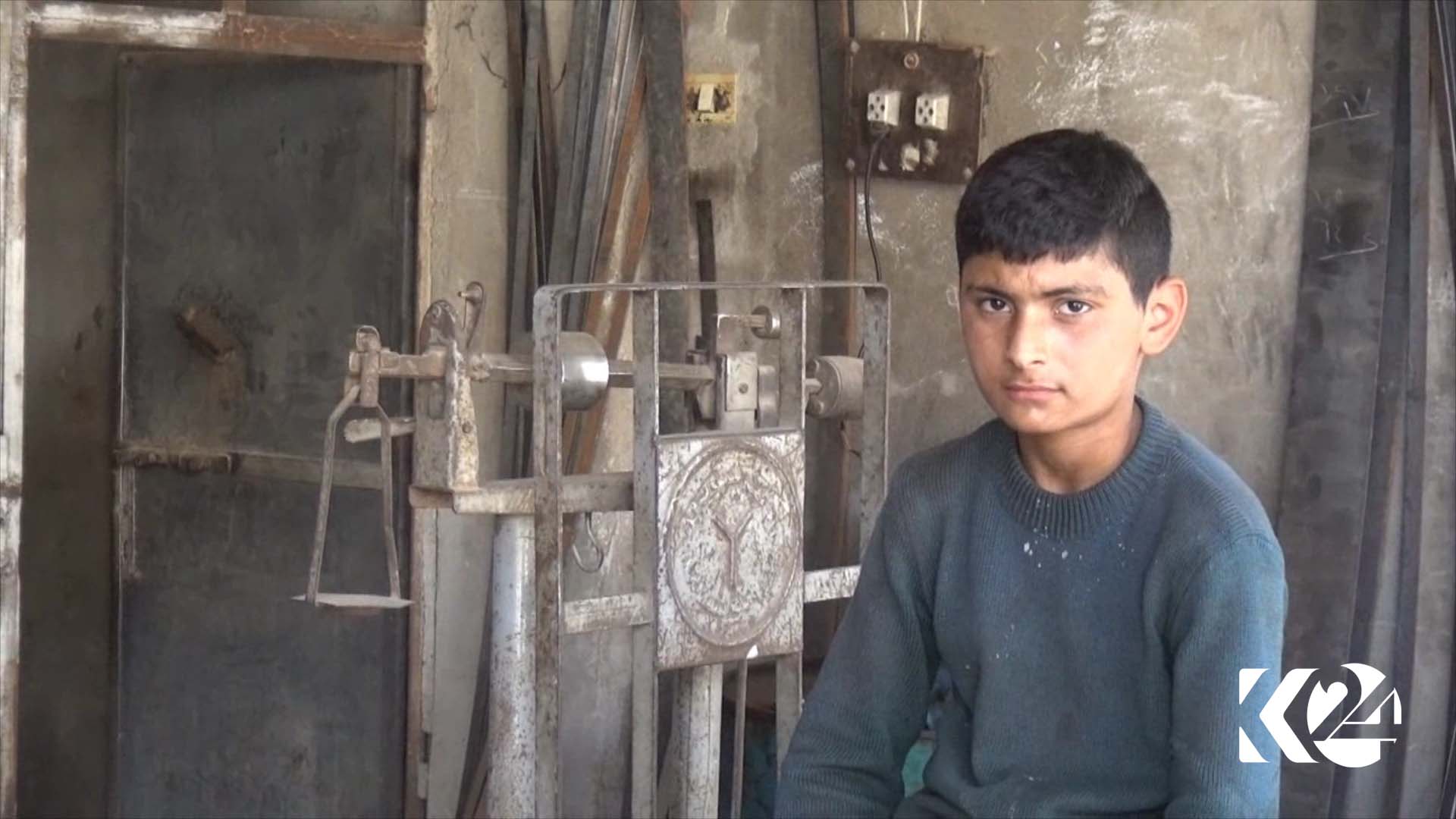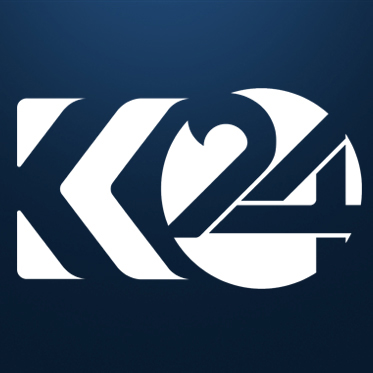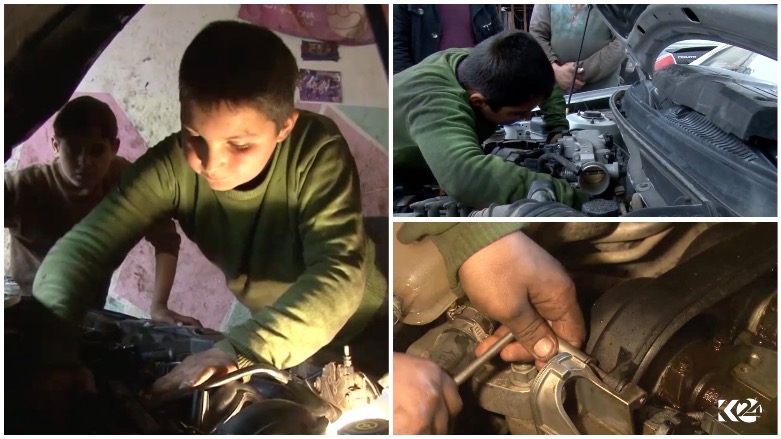PHOTOS: Child labor rising in Kurdish Syrian Canton of Kobani

ERBIL (Kurdistan 24) – The phenomenon of child labor is on the rise in markets and workshops in the Kurdish Canton of Kobani in Syrian Kurdistan (Rojava).
“I am here to learn a profession, to have a job in the future, and to help my family with the money I make,” Ahmad Mihedin, a minor who is working as a mechanic, told Kurdistan 24.
Most of the children need to work to help their families cover the daily expenses of living, and the inability to pay for children’s education leaves families no options but to send their children to work.
“I left school after failing my studies, preferring to learn the profession of car repair to benefit my family by paying the rent and expenses of the house,” Arif Mousi says.
Siham Othman, head of the workers’ committee in the Kobani Canton, said she is attempting to eradicate this growing phenomenon by providing salaries to low-income families and sending their children to schools and institutions concerned with youth.
According to observers, the economic situation has mainly affected the increase in child labor in the district and the other Cantons of Rojava, which threatens to endanger the future of a whole generation.
Lack of international organizations concerned with children’s affairs in the district has exacerbated the problem, Kurdistan 24 reported from Kobani.
“We don’t want to burden our families with the expenses education requires.”
According to the International Labor Organization (ILO), any child under the age of 18 must not be forced into mines, fields, factories, and homes, carrying heavy loads or working long hours, all having the possibility of many life-long damaging physical and psychological consequences.
Over 280 million children between the ages of 5 and 17 are involved in the labor market around the world, and more than 152 million are victims of child labor ranging from forced labor, bondage, prostitution, or illegal activities, according to a UN report.
In September 2014, Kobani was a battleground between Islamic State (IS) insurgents and Kurdish forces of the People’s Protection Units (YPG) and Women’s Protection Units (YPJ).
The city was devastated, and large numbers of residents were displaced during months of clashes.
On Jan. 26, 2015, the YPG, along with the Free Syrian Army (FSA) and Peshmerga reinforcements and the continued US-led airstrikes, liberated Kobani.
Reconstruction followed as locals started to return to the area and began rebuilding their homes.
Editing by Karzan Sulaivany
(Kurdistan 24 correspondent Radhwan Bizar contributed to this report)






